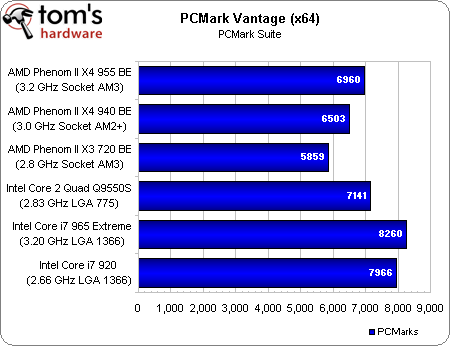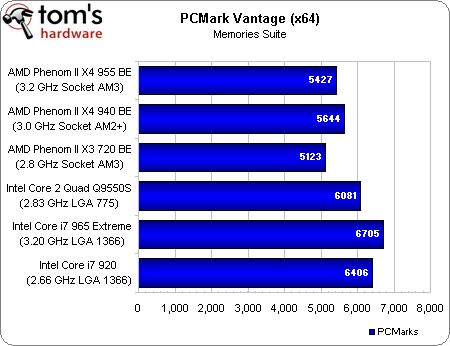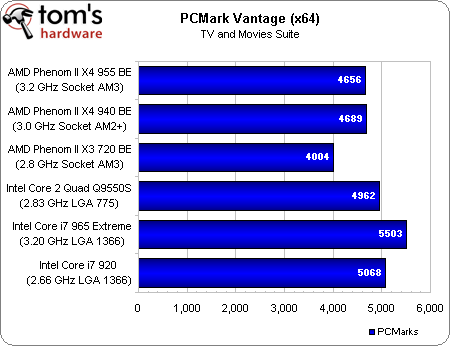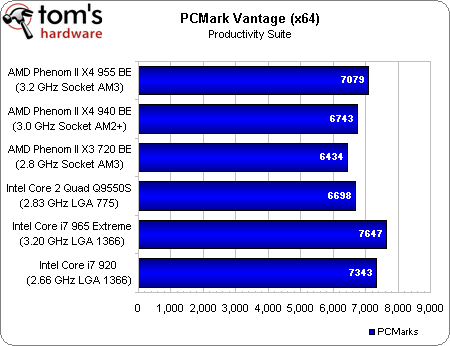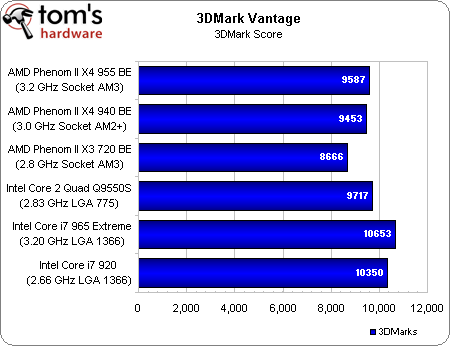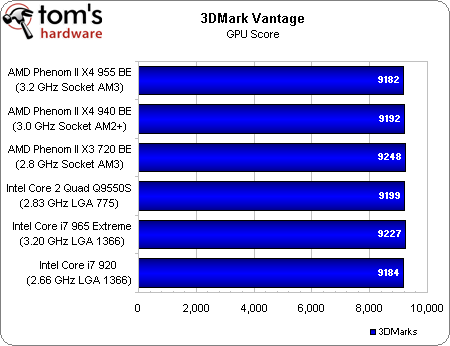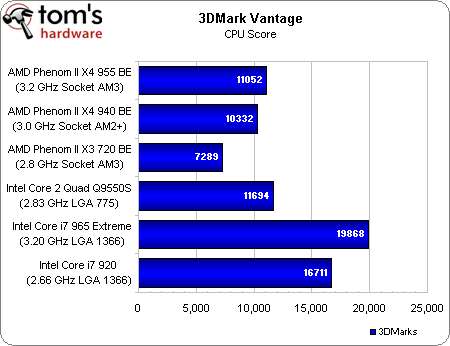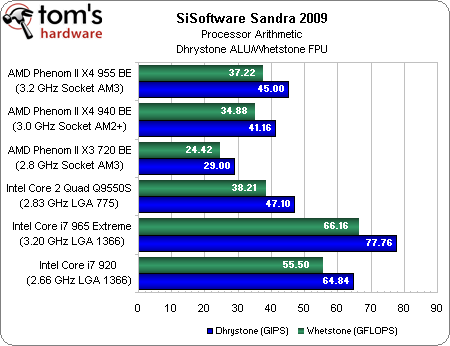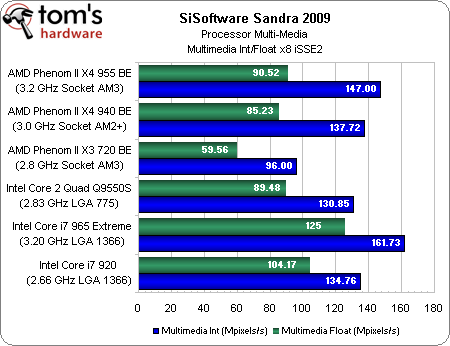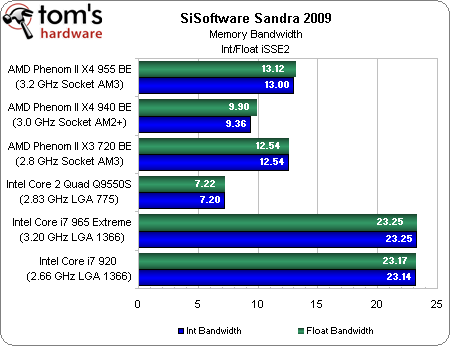Phenom II X4 955: AMD's Dragon Platform Evolves
Benchmark Results: Synthetics
From a price perspective, AMD seems to be aligning itself most closely with Intel’s Core 2 Quad Q9550—a chip selling for $270 on Newegg. In PCMark’s overall suite score, that 2.83 GHz contender is able to slightly best AMD’s X4 955 in a fairly close match.
The Phenom II X4 940 trails a bit behind the X4 955, and the X3 720 drops off more significantly—the result of losing one core of compute muscle.
Both the Core i7 965 Extreme and Core i7 920 offer notable performance increases compared to the Q9550. And at $288, stepping up to the i7 920 looks like an advisable proposition.
Again, the Phenom II X4 955 comes close to Intel’s Core 2 Quad Q9550, but falls just short. Given the $30 price difference, though, we’d expect this result. Of particular note are the CPU scores, which demonstrate the Core i7’s advantage in this synthetic test, even versus Intel’s own Core 2 micro-architecture.
Sandra 2009 employs new terminology for its arithmetic and multi-media benchmarks, measuring giga-instructions per second, giga-floating point operations per second, and mega-pixels per second (in addition to the gigabyte per second memory bandwidth test).
Immediately, we see the arithmetic prowess of Core i7. AMD’s Phenom II X4 demonstrates improved performance in the multi-media metric, standing up to the Core i7 920 without a problem.
Core i7’s triple-channel memory controller gives is a huge memory bandwidth advantage, but Phenom II’s integrated controller lets it move significantly more data per second than the Core 2 Quad’s MCH-based architecture. Most interesting is the Phenom II X4 940’s poor bandwidth, which is, in fact, repeatable.
Get Tom's Hardware's best news and in-depth reviews, straight to your inbox.
Current page: Benchmark Results: Synthetics
Prev Page Test Setup And Benchmarks Next Page Benchmark Results: A/V Encoding-
inmytaxi Why call a 955 $255 plus 790GX mb $110 plus 4 gb ram $41 is $500, when it's actually $410 before shipping and rebates, which about cancel out? And that's just picking off the cheapest at newegg and not price shopping, which might knock it below $400.Reply
Not to mention the six months on the market the other set up has had to drop in price ... -
inmytaxi Of course, even at NewEgg, the i7 is still just a benny more, at $280 for the i7, $84 for 1600 6gb ram and $200 for a MB. What's, $564 before ship and rebates, knock $50 if you get the i7 at microcenter, and another $20 on real cost after nit picking out shipping and rebates ... and settle for 1333 ram ... you're within fifty bucks!!!Reply
If it wasn't for that Nvidia issue with the i7 ...
Hell, -
inmytaxi Hell, you can knock seventy off the hundred dollar price diff. with an open box motherboard for one thirty instead of twoo hundred.Reply
Nice processor, but until the price drop comes the only reason to buy it is if you're upgrading. If you're doing a clean sweep it's the i7 all the way.
-
gsacks inmytaxiHell, you can knock seventy off the hundred dollar price diff. with an open box motherboard for one thirty instead of twoo hundred.Nice processor, but until the price drop comes the only reason to buy it is if you're upgrading. If you're doing a clean sweep it's the i7 all the way.Reply
Not fair. Don't compare open box prices to new prices. If you want to buy used/refurb/reconditioned/open box, then compare the prices against the same used/refurb/reconditioned/open box equivalent for the other platform. Otherwise, you are fudging your numbers.
-
trevorvdw "The only standout in this clumsy console port is AMD’s Phenom II X3 720, which lags at both 1680x1050 and 1920x1200. The rest of the processors serve up reasonably close performance, per what we’ve come to expect from Grand Theft Auto 4."Reply
Yeah that whole less than 10% behind the i7 920 is totally lagging and not close in performance... who writes this drivel? -
for gamers: seriously, get the 720BE and oc it to death. then spend your money on VIDEO CARD(S)... that's what's important here!Reply
